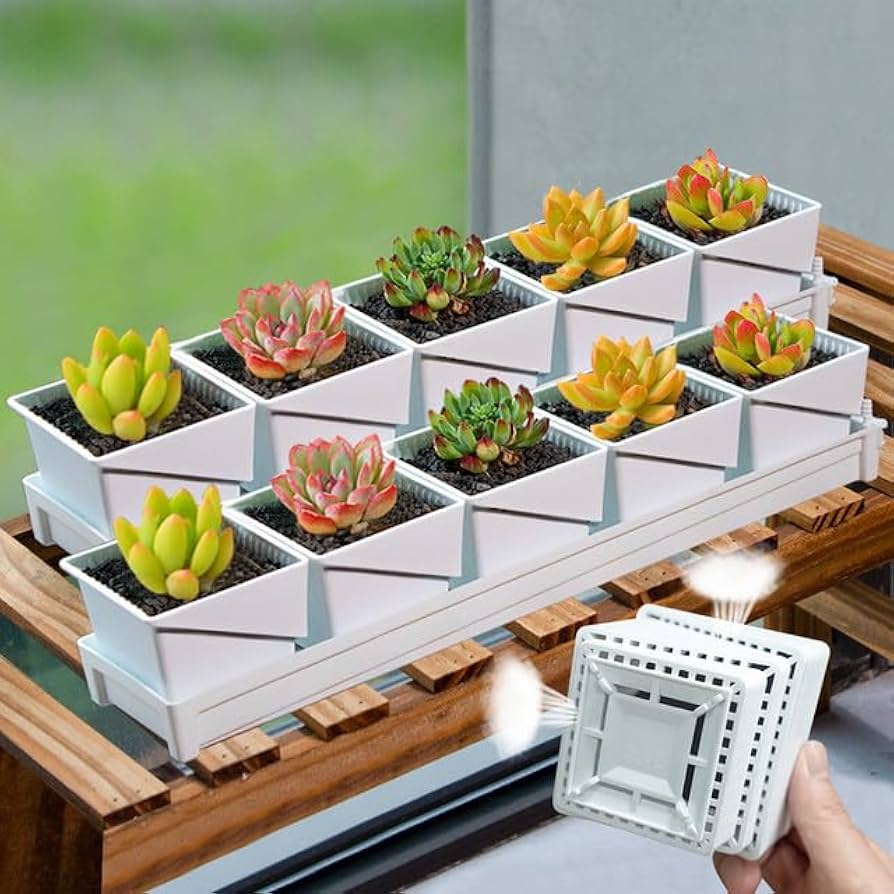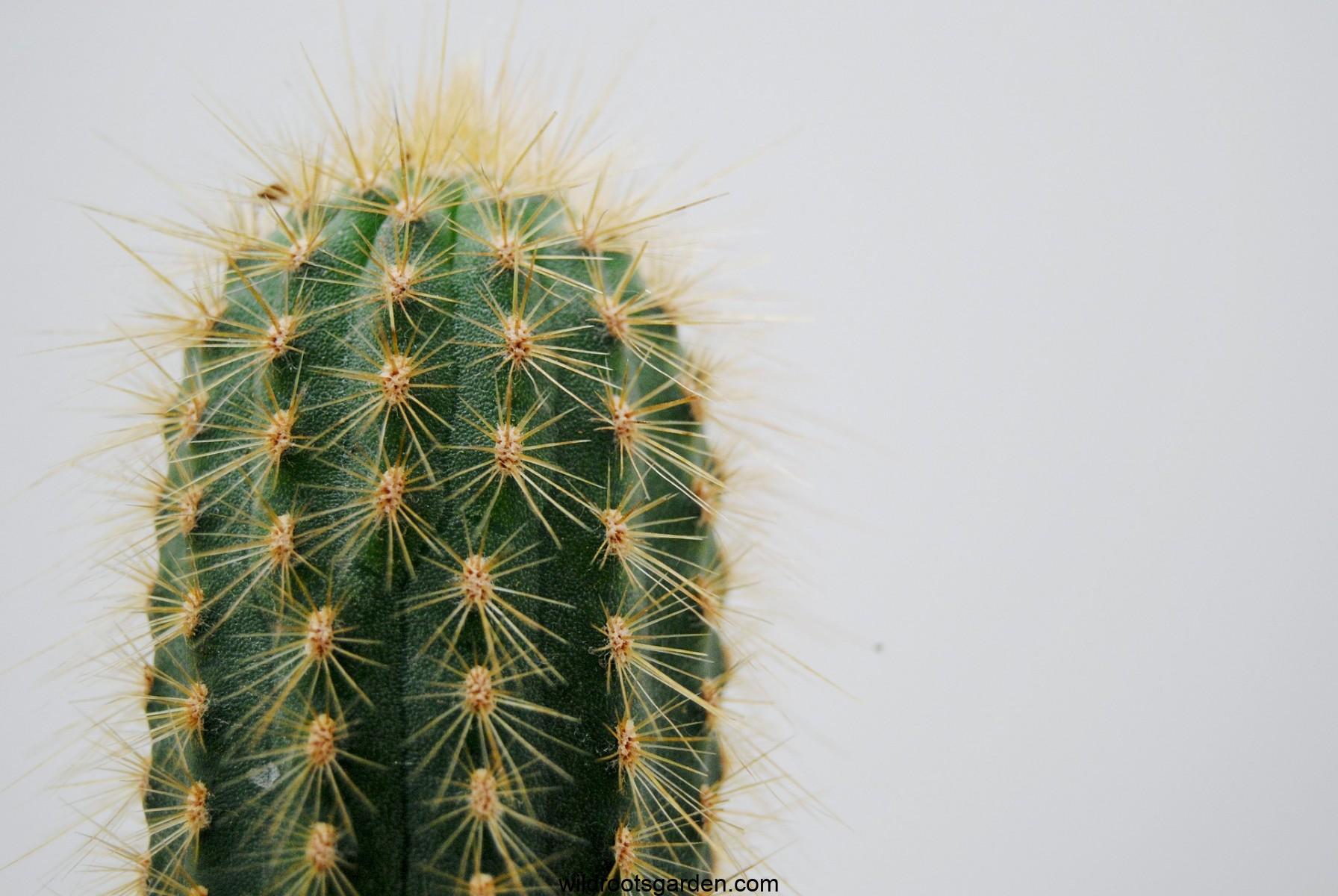Cacti absorb carbon dioxide at night to release oxygen, improving air quality and promoting better sleep. While they may not remove harmful gases or chemicals like air purifiers, they contribute to fresher indoor air.
Are you curious about the air-purifying abilities of cacti? Many individuals are drawn to these resilient plants for their unique aesthetic and potential health benefits. Cacti, like other plants, play a role in enhancing indoor air quality by absorbing carbon dioxide and releasing oxygen, which can result in a more refreshing and invigorating atmosphere.
While they may not be as effective as specialized air purifiers in removing specific toxins, their contribution to promoting healthier indoor air makes them a welcome addition to any living space. Let’s explore the fascinating world of cacti and their potential impact on the air we breathe.

Credit: www.dammannsgardenco.com
The Cactus Air-purification Debate
When it comes to indoor plants that are believed to clean the air, cacti often find themselves at the center of a debate. While these desert-dwelling plants are known for their unique characteristics and ability to thrive in harsh environments, their effectiveness in purifying the air is still a topic of discussion.
Cactus Characteristics And Air Quality
Cacti are renowned for their ability to absorb carbon dioxide and release oxygen, just like many other plants. This natural process occurs primarily during the night, making cacti a popular choice for bedrooms as they can enhance sleep quality by supplementing the oxygen levels in the room.
Additionally, cacti are known for their resilience and can withstand challenging conditions with minimal care. Their unique ability to store water allows them to survive in arid environments, making them a magnificent addition to any plant collection.
Common Claims And Misconceptions
While cacti do have some air-purifying properties, it is important to address common claims and misconceptions surrounding their abilities. It is crucial to understand that cacti are not capable of removing harmful gases or chemicals from the air, unlike specially designed air purifiers.
Some individuals believe that cacti can transmit negative energy due to their prickly thorns, as suggested by vastu and Feng Shui experts. However, these claims are not scientifically proven and should be taken with a grain of salt.
On the other hand, specific succulent species, like Aloe vera and Snake Plant, have been scientifically proven to effectively remove airborne toxins, promoting healthier and fresher air indoors.
While cacti may not be the ultimate solution for air purification, they can certainly contribute to a more oxygen-rich environment and add a touch of natural beauty to your living space.
Cacti’s Nighttime Oxygen Contribution
Do cacti clean the air? Cacti are not only visually appealing additions to your home, but they also play a role in contributing to a healthier environment. One fascinating aspect of cacti is their nighttime oxygen contribution, which can have a positive impact on your sleep and overall oxygen levels.
How Cacti Absorb Carbon Dioxide
During the night, cacti engage in a process called crassulacean acid metabolism (CAM), which allows them to absorb carbon dioxide efficiently. Unlike other plants that primarily perform photosynthesis during the day, cacti take in carbon dioxide at night, storing it for use during the day. This unique adaptation enables them to thrive in arid environments and makes them effective air purifiers.
Impact On Sleep And Oxygen Levels
By releasing oxygen at night, cacti can have a positive impact on indoor air quality, making them beneficial additions to bedrooms and other living spaces. The presence of cacti can enhance the oxygen levels in your home, potentially improving the quality of your sleep and overall well-being.
Cacti And Feng Shui: A Balanced View
Negative Energy Theories
According to Feng Shui, cacti can bring negative energy due to their sharp thorns.
Cactus Placement And Well-being
Placing cacti in the home is believed to cause stress and misfortunes.

Credit: phys.org
Succulents Vs. Cacti: Purification Powers
Cacti, like other plants, absorb carbon dioxide at night, releasing oxygen and improving indoor air quality. However, they are not as effective as specialized air purifiers in removing harmful gases and chemicals. Cacti can enhance oxygen levels, but air purification is limited.
Succulents and cacti are both popular houseplants known for their low maintenance and unique appearance. But, do they have the same air purification powers? Let’s explore the differences between the two and which species are best for improving indoor air quality.
Succulent Species That Improve Air
According to scientific evidence, certain succulent species like Aloe vera and Snake Plant have been proven to effectively remove airborne toxins, promoting healthier and fresher air indoors. These plants are often recommended by experts as some of the best options for improving indoor air quality.
Differences Between Cacti And Succulents
Although cacti are resilient and low maintenance, they are not as effective in purifying the air as some succulent species. While cacti absorb carbon dioxide at night and release oxygen, they are not capable of removing harmful gases or chemicals like some specially designed air purifiers.
Overall, both succulents and cacti can make a great addition to your indoor space. However, if you are looking for a plant with powerful air purification abilities, it may be best to opt for specific succulent species like Aloe vera and Snake Plant.
Top Plants For Indoor Air Quality
When it comes to combating mold spores, certain houseplants play a vital role in improving indoor air quality. These plants not only add a touch of nature to your indoor space but also act as natural air purifiers, effectively eliminating mold spores and other common toxins from the air.
When it comes to selecting houseplants for cleaner air, it’s crucial to choose the right ones that are known for their air-purifying properties. Certain plants have been scientifically proven to effectively remove airborne toxins, making them the best options for promoting healthier and fresher indoor air.
The Limitations Of Cacti As Air Purifiers
Cacti are indeed air-purifying plants, absorbing carbon dioxide and releasing oxygen, which can improve indoor air quality. However, they have limitations in removing harmful gases and chemicals, unlike specialized air purifiers. While they can contribute to fresher air, they may not fully replace the function of air purifiers.
Comparing Cacti With Air Purifiers
Cacti have their limitations when it comes to air purification. While they do absorb carbon dioxide and release oxygen, they are not as effective as specialized air purifiers.
What Cacti Can And Cannot Do
- Cacti absorb carbon dioxide and release oxygen.
- They can improve air quality to some extent.
- However, they are not capable of removing harmful gases or chemicals.
- Cacti cannot completely replace the function of air purifiers.
Scientific Perspective On Plant-based Air Purification
Scientific studies have shown that while cacti absorb carbon dioxide and release oxygen at night, they are not capable of removing harmful gases or chemicals like some air purifiers. Therefore, cacti have a limited role in air purification and cannot completely replace the function of air purifiers.
Research Findings On Houseplants
Houseplants have been found to have a positive impact on indoor air quality by reducing the levels of certain pollutants, such as benzene, formaldehyde, and trichloroethylene. This has been demonstrated in various studies, including those conducted by NASA and the American Society for Horticultural Science.
These studies have shown that certain types of houseplants are particularly effective at purifying the air. For example, the snake plant, spider plant, and peace lily are known for their ability to remove toxins from the air.
Assessing The Effectiveness Of Cacti
While cacti are often praised for their low maintenance and unique aesthetic appeal, there is limited scientific evidence to support the claim that they are effective at purifying the air. While cacti absorb carbon dioxide and release oxygen, as most plants do, they are not capable of removing harmful gases or chemicals like some specially designed air purifiers.
However, cacti can still have a positive impact on indoor air quality by providing supplemental oxygen and improving sleep. Additionally, they are resilient and can make a magnificent addition to any plant collection.

Credit: www.amazon.com
Practical Tips For Improving Indoor Air Quality
Cactus may add a touch of green to your space, but they have limited air-purifying abilities. While they absorb carbon dioxide and release oxygen, they aren’t as effective as specialized air purifiers in removing harmful gases or chemicals from the air.
Practical Tips for Improving Indoor Air Quality
Indoor air pollution can have a significant impact on our health, causing symptoms like headaches, dizziness, and fatigue. While plants like cacti have been touted as air purifiers, the truth is they have limited capabilities in removing harmful gases and chemicals from the air. However, incorporating cacti into your indoor environment can still have benefits, such as releasing oxygen and improving sleep quality.
Beyond Plants: Comprehensive Air Quality Strategies
While plants can help improve indoor air quality, they are just one part of a comprehensive strategy to maintain healthy air in the home. Other strategies include:
– Regularly changing air filters in heating and cooling systems
– Proper ventilation to allow fresh air to circulate
– Using natural cleaning products to avoid harsh chemicals
– Avoiding smoking indoors
– Testing for radon, a naturally occurring gas that can be harmful in high concentrations
Maintaining Healthy Air in the Home
In addition to the above strategies, there are other ways to maintain healthy air in your home. Some practical tips include:
– Vacuuming carpets and rugs regularly to remove dust and allergens
– Using a dehumidifier to control moisture levels and prevent mold growth
– Keeping indoor plants healthy and free of pests to avoid introducing pollutants into the air
– Monitoring humidity levels to prevent the buildup of harmful pollutants like formaldehyde and benzene
By incorporating a comprehensive approach to indoor air quality, you can ensure that your home is a healthy and comfortable environment for you and your family.
Frequently Asked Questions
Are Cactus Good For Oxygen?
Yes, cacti are good for oxygen as they absorb carbon dioxide at night and release oxygen, which can improve air quality and help with better sleep.
Is It Good To Keep Cactus In the Room?
Cacti are not effective in purifying the air like some specially designed air purifiers. While they do absorb carbon dioxide and release oxygen at night, they cannot remove harmful gases or chemicals. Keeping cacti in a room may not significantly improve air quality.
Do Succulents Purify The Air In Your Home?
Succulents, like Aloe vera and Snake Plant, effectively improve indoor air quality by removing airborne toxins.
What Is The Best Plant For Air Quality?
The best plants for air quality are English ivy, peace lily, palms, snake plant, Boston fern, and spider plant. These houseplants are effective in removing mold spores and common toxins from the air indoors. However, it is important to note that cacti, although they provide fresh air, have limited capabilities in purifying harmful gases or chemicals like air purifiers.
Final thought
While cacti do have the ability to absorb carbon dioxide and release oxygen, their role in air purification is relatively limited. They are not capable of removing harmful gases or chemicals like some specially designed air purifiers. Therefore, it is important to consider other plants that are more effective in improving indoor air quality, such as Aloe vera and Snake Plants.
Ultimately, maintaining a diverse range of plants in your home will contribute to a healthier and fresher indoor environment.

